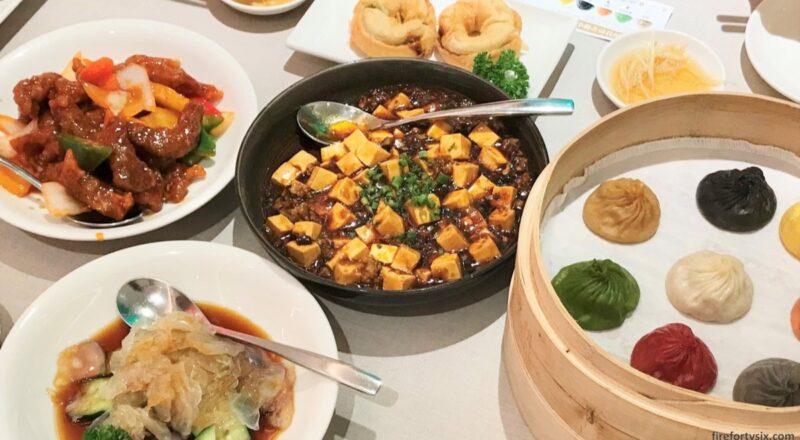Enter any shopping mall in Singapore and you will most likely find an outlet of a Chinese chain store. Whether it’s Crystal Jade, Tung Lok, Imperial Treasure or Paradise Group, you’re bound to come across one of their numerous concepts.
We’ve eaten at most of them over the years, and while the dishes they offer tend to be quite similar, there are differences in variety, quality and price points.
Nowadays, when we feel like going out for a simple Chinese meal, our first choice tends to be at Paradise Dynasty. We used to frequent the branch in ION Orchard, but that has since been replaced by the higher-end Taste Paradise.
Our preferred location is now in the basement of Funan Mall, which gets quite a fair bit of traffic from the office crowd nearby. We try to get there just as they open, so as to avoid the lunch rush.
Among the many choices of appetisers, The Wife has a particular liking for their braised bamboo shoots. Sometimes, she even orders them as takeaway to accompany a home-cooked meal the following day.
I tend to go with the chilled jellyfish in soy sauce, which offers a crunchy and refreshing bite that’s salty and sour at the same time. It’s a good way to open up the palate, though they sometimes do go a bit overboard with the soy sauce.


When we bring The Old Folks there for a meal, we usually order the multi-coloured xiao long bao, a specialty of Paradise Dynasty. In addition to the original version, they’ve created numerous other flavours, and assigned a colour to each of them.
Some, like garlic, crab roe and Szechuan, are not unexpected, but other flavours are a lot more left field. Flavours like black truffle, foie gras and cheese are not commonly found in traditional Chinese cuisine, and add an element of surprise for The Old Folks.


If you’re eating the entire basket by yourself, the restaurant has a recommended sequence “to ensure the optimal tasting of these eight distinct flavours”. Specifically: Original > Luffa gourd > Foie gras > Black truffle > Cheese > Crab roe > Garlic > Szechuan.
Speaking of Szechuan, they do have a decent selection of the classics to choose from, including saliva chicken and mapo tofu. The chicken is especially nice, with a light but noticeable Szechuan pepper kick. The tofu is passable, but definitely not as good as the one from Chen’s Mapo Tofu.


The restaurant has a wide selection of noodle dishes, featuring freshly hand-pulled noodles. They even make sure to have a glass wall separating the dining hall and the kitchen. So that you’re treated to the sight of their chefs using their kungfu to transform a lump of dough into thin, chewy strands.
Most of their noodles are good and they all come in generous portions. But our favourite has to be the tan tan noodles, with its thick and spicy sesame-laden broth. Their egg fried rice, which tastes suspiciously similar to the famous one from Din Tai Fung, is also an item that we regularly order.


One dish that stands out is their sweet and sour pork. It’s an item that you’ll find in almost all Chinese restaurants in Singapore. Even though it’s a commonly available, it’s not easy to find one that’s made well.
Well, whenever we order sweet and sour pork, the benchmark we use is the one at Paradise Dynasty. We’ve eaten it so many times, and it’s been good every single time. The only other place that’s better is Chong Qing Grilled Fish, with their “concubine lychee pork”, a fancy name for essentially the same dish.


And when we need to order the obligatory vegetable, it’s invariably the stir-fried kailan. A simple plate of crunchy greens with a mild gingery note from the slightly goopy sauce.
Like most Chinese restaurants, desserts are on the menu but the choices are quite limited. By the time we finish all our savoury dishes, we’re too full to have any sweets and so we usually pass.
Our most recent meal at Paradise Dynasty was a couple of months ago, together with The Old Folks. It’s Chinese comfort food done well, at a reasonable price, and we’ll probably be visiting them again real soon.
